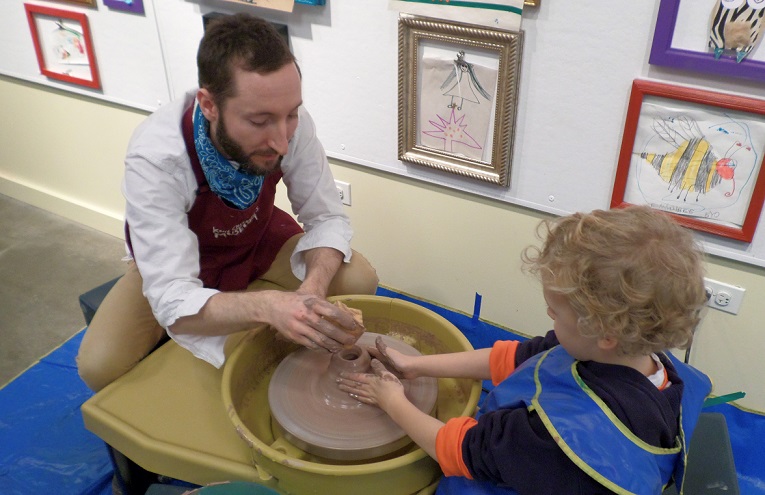July 2024 Blog: The Power of Art for Young Children
From the moment a child holds a crayon, they can begin to engage with the world around them through art. These early experiences are about so much more than the products the child produces. The benefits of art for young children extend far and wide, influencing their physical, cognitive, social, and emotional development.
Creative Expression
Art provides children with ways to express themselves freely, without the constraints of words. Much like adult artists, children can communicate their thoughts, feelings, and experiences visually. Creating art fosters confidence and self-awareness. Through open-ended art activities, they learn to trust their instincts and express themselves.
Fine Motor Development
The act of holding a paintbrush, manipulating clay, or cutting paper requires hand-eye coordination and small muscle strength. Engaging in art activities is a fun way for children to refine their fine motor skills, strengthen muscles, and improve dexterity. These foundational skills are essential for later academic tasks, such as writing.
Cognitive Growth
Art helps children develop critical thinking and problem-solving skills as they experiment with different materials and techniques. They learn to make decisions, plan their creations, and respond to unexpected outcomes. Additionally, art promotes foundational math learning as children explore concepts like shape, size, and patterns.
Emotional Regulation
Art is a safe outlet for children to process, express, and learn about their emotions. Whether they’re feeling joyful, sad, or anxious, creating art allows them to channel their feelings in constructive ways. Through art experiences, children can explore their emotions, which promotes resilience and mental well-being.
Appreciation of Diversity
Artist Richard Kamler famously said, “Art is our one true global language. It knows no nation, it favors no race, it acknowledges no class. It speaks to our need to reveal, heal, and transform. It transcends our ordinary lives and lets us imagine what is possible.”
Learning about art from a wide range of cultures and traditions introduces children to diverse perspectives and expands their cultural awareness. Through art experiences, children can develop an appreciation for different artistic styles and narratives. This exposure fosters curiosity, empathy, and respect for diversity.
See you at the Museum!
–Stephanie Bynum, Vice President of Programs
